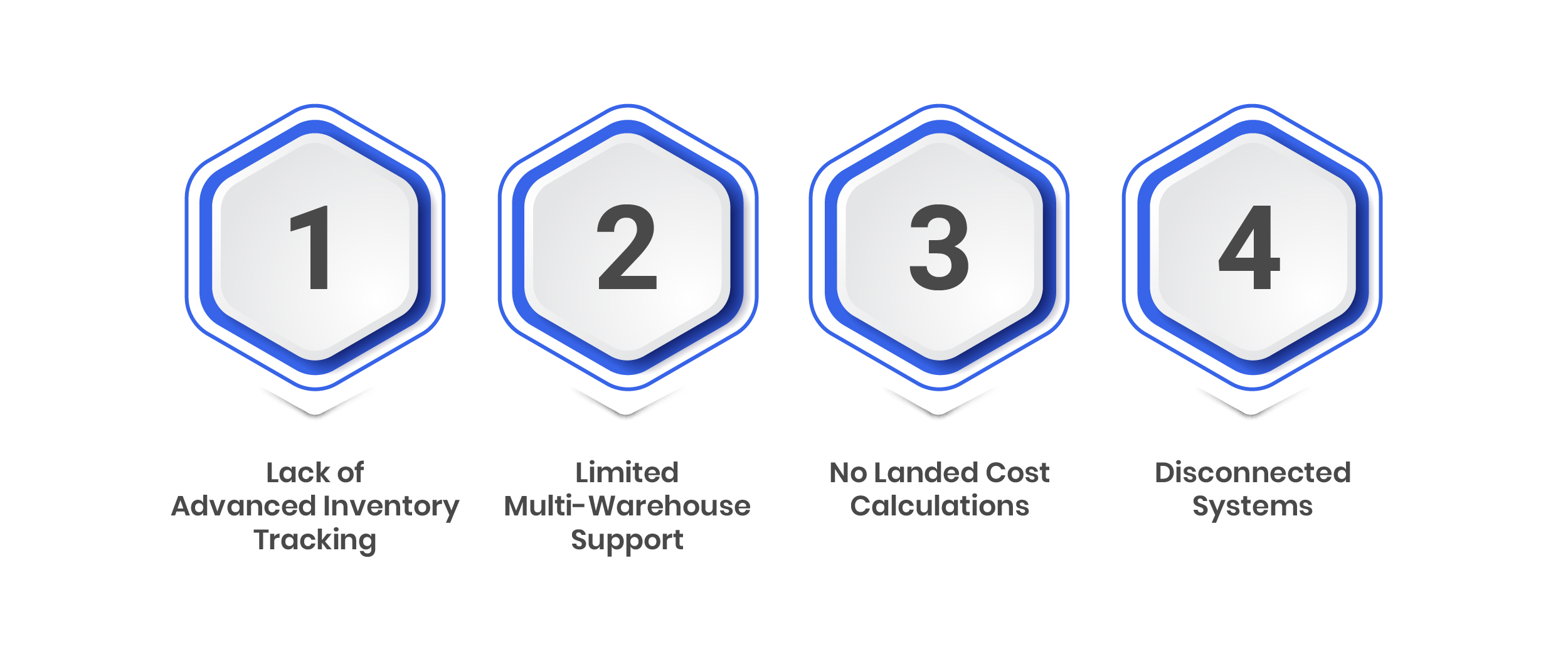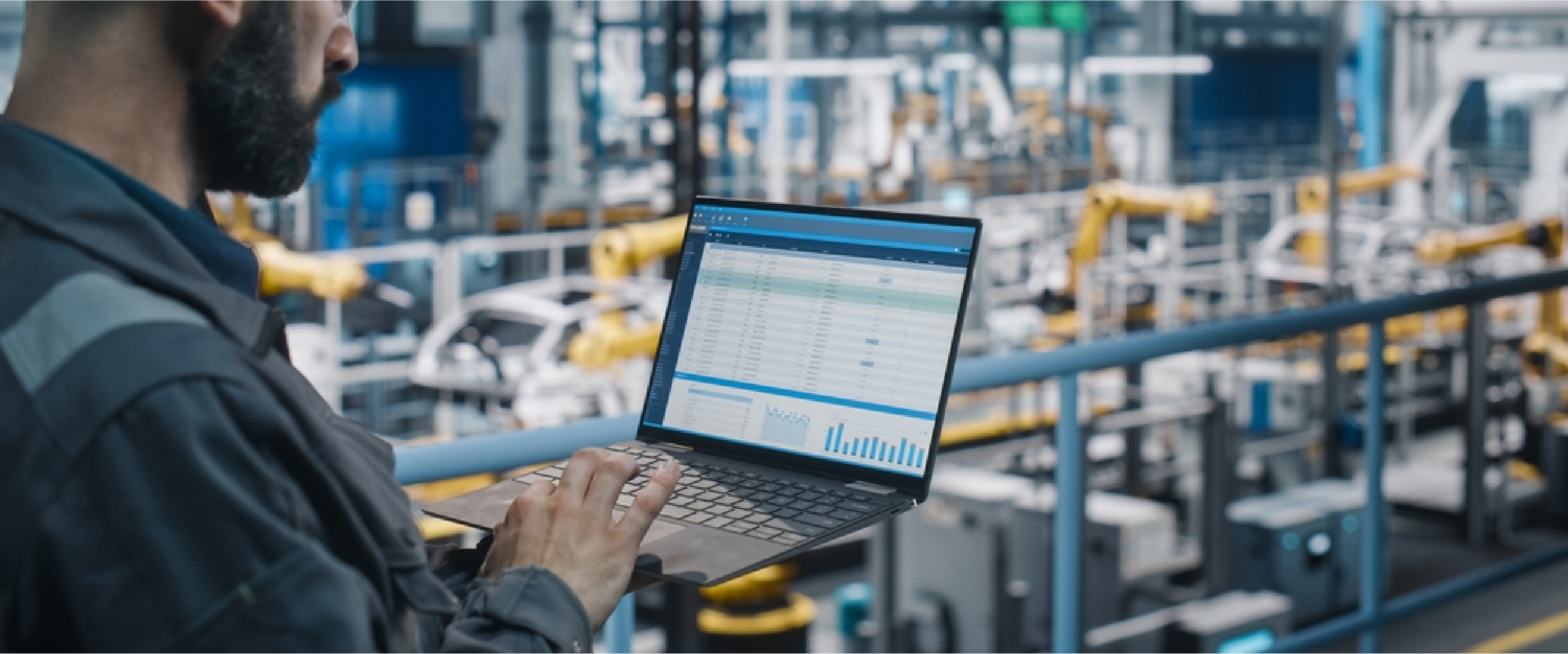For early-stage food & beverage brands, QuickBooks can be a solid starting point. It’s easy to use, affordable, and gets the job done when your operations are simple. However, there comes a time when the business reaches a tipping point.
Many founders reach out to us when they hit a tipping point: they’re expanding to a new facility, managing both dry and frozen inventory, and sourcing ingredients internationally. Suddenly, the system that worked in the early days -QuickBooks- no longer keeps up.
When you’re scaling: importing ingredients, expanding warehousing, juggling frozen and shelf-stable inventory, and selling across multiple channels, QuickBooks can feel like trying to run a commercial kitchen with a home stove.
In this post, we’ll walk through:
- Top signs when an F&B brand has outgrown QuickBooks.
- The key features to look for in your next accounting or ERP system
- How to make the transition without disrupting your operations
4 Signs QuickBooks Starts to Fail Growing F&B Brands
Food and beverage manufacturing companies outgrow QuickBooks because of their need to scale efficiently, without adding headcount just to keep up with transactional volume.
As operations grow, relying on manual data entry, spreadsheet workarounds, and disconnected systems quickly becomes a bottleneck. For many, the goal isn’t just better accounting, it’s smarter accounting.
Modern cloud ERPs offer automation, real-time data visibility, and streamlined workflows that reduce the need for additional hires. Cleaner reporting, fewer errors, and less time spent on repetitive tasks mean your existing team can focus on higher-value work.
Your team does not have to chase down numbers or reconcile disconnected data.

Here are top 5 signs that a food and manufacturing business has outgrown QuickBooks:
1. Lack of Advanced Inventory Tracking
QuickBooks wasn’t built to handle lot tracking, batch numbers or temperature-specific storage needs
If you’re managing frozen inventory or imported raw materials, this becomes a major blind spot. Anything that requires detailed tracking from supplier to shelf, QuickBooks leaves a gap. You won’t get the visibility or control you need—which can lead to stockouts, compliance issues, or wasted inventory.
2. Limited Multi-Warehouse Support
Your business needs an inventory management solution which handles everything from purchasing to dispatch.
Relying on multiple spreadsheets in Excel leads to mismanagement of inventory across multiple locations. It requires a lot of manual entry (read: more errors)
Hence, if your company is planning to add new channels, geographies/products require a more sophisticated system.
3. No Landed Cost Calculations
Importing ingredients or packaging from overseas? QuickBooks doesn’t calculate landed costs, which means you may be mispricing products without realizing it.
4. Disconnected Systems
QuickBooks doesn’t integrate well with many F&B-specific tools (like inventory management or order fulfillment systems). This leads to manual work and inconsistent data.
Will the Transition from QuickBooks be Smooth?
Even when the limitations become painfully clear, many companies hesitate to make the leap to a software/ ERP system. Why? The transition feels risky.
There’s fear of disrupting day-to-day operations, concern about costs, and a general sense of overwhelm when it comes to choosing the “right” ERP. Add to that a lack of in-house technical expertise and years of workarounds built into spreadsheets, and it’s easy to see why decision-makers stick with what they know, even if it’s holding them back.
Because most well-known softwares/ ERP out there are great to transition to. However, the key thing to do here is to select your implementation partner carefully.
What to Look for in Your Next System

If you’re outgrowing QuickBooks, here are the features that matter most:
- Landed Cost Tracking: So you can accurately price and protect margins
- Multi-Warehouse Inventory Management: Especially for frozen vs dry storage
- Batch & Lot Tracking: Essential for traceability and food safety
- Integrated Sales Channels: To sync wholesale, DTC, and retail operations
- Forecasting & Planning: To align purchasing with sales and seasonality
Systems like NetSuite, DEAR, Mar-Kov, or Microsoft Dynamics are popular among scaling CPG brands because they combine robust inventory control with accounting and operations visibility.
Learn more about the different types of ERP systems and their benefits here.
The Right ERP System for Manufacturing & Distribution Companies
Manufacturing and distribution companies require an ERP system that handles:
- Advanced inventory management capabilities
- Production planning and scheduling features
- Supply chain management and logistics integration
- Scalability and flexibility for growing businesses.
The following are some ERP systems tailored for manufacturing and distribution:
- SAP Business One: Comprehensive inventory management, production planning, and supply chain management.
- Microsoft Dynamics 365: Robust features for manufacturing, warehousing, and inventory control, with seamless integration with other Microsoft tools.
- Epicor ERP: Industry-specific solutions for manufacturing and distribution, offering advanced inventory management and production planning.
Scenario Example:
Consider a U.S.-based food manufacturing company setting up a new production facility and importing both dry and frozen ingredients from Europe. In this case, the business will require a system capable of managing inventory, warehousing, and production operations—capabilities that go well beyond what QuickBooks can offer.
Recommended ERP Solutions:
To support this level of operational complexity, we recommend either NetSuite or SAP Business One—both of which are well-suited for manufacturing businesses managing perishable goods and international supply chains.
1. NetSuite
A scalable, cloud-based ERP ideal for growing manufacturers. NetSuite offers:
Inventory Management: Real-time visibility across multiple warehouses, with support for dry and frozen goods.
Manufacturing & Production Planning: Work orders, bill of materials (BOM), and demand planning tools tailored for food production.
Lot and Batch Tracking: Essential for traceability, quality control, and compliance in food manufacturing.
Procurement & Supply Chain: Handles international procurement, landed cost tracking, and import documentation.
Scalability: Adapts as the business grows, providing a future-ready solution.
2. SAP Business One
An excellent choice for small to mid-sized manufacturers. Key capabilities include:
Warehouse Management: Real-time inventory tracking, including cold storage conditions.
Material Requirements Planning (MRP): Supports efficient production scheduling and resource planning.
Cold Chain Monitoring: Ensures compliance with food safety standards.
Strong Local Partner Network: Access to implementation and support services from experienced U.S.-based consultants.
For a pasta manufacturer dealing with perishables, import logistics, and manufacturing workflows, NetSuite and SAP Business One deliver the traceability, compliance, and inventory control that QuickBooks lacks. Between the two, NetSuite stands out for businesses anticipating growth and seeking a more integrated, cloud-based solution that evolves with their needs

Final Thoughts
Outgrowing QuickBooks isn’t a bad thing. It’s a sign your business is maturing.
If you’re building a brand with complex supply chains, growing warehouse space, and an expanding product line, it’s time to upgrade to systems built for the next stage.
And if you want help figuring out what that looks like, without overcomplicating things, we’re here to help.
FAQS
Q: Does an ERP replace QuickBooks?
A: Yes, an ERP (Enterprise Resource Planning) system can replace QuickBooks, especially as your business outgrows the basic accounting features QuickBooks provides. While QuickBooks focuses mainly on bookkeeping, invoicing, and financial reporting, an ERP integrates a much broader range of functions, including inventory management, production planning, supply chain operations, procurement, and more.
If you’re managing complex operations like multi-location inventory, manufacturing, or importing goods, an ERP offers the centralized visibility and control that QuickBooks simply can’t deliver. So, when your business needs go beyond basic accounting, an ERP becomes a more complete and scalable solution.
Q: Can NetSuite replace QuickBooks?
A: Absolutely. NetSuite is a full-featured ERP system that not only replaces QuickBooks but also adds far more functionality. While QuickBooks is great for basic accounting and small business needs, NetSuite is built for growing and more complex businesses that need integrated tools for:
Accounting and Financial Management
Inventory and Warehouse Management
Manufacturing and Production Planning
Procurement and Supply Chain Operations
Multi-entity and Multi-location Support
For companies dealing with importing, manufacturing, and scaling operations, NetSuite provides real-time visibility, automation, and compliance capabilities that QuickBooks lacks. So if you’re outgrowing QuickBooks, NetSuite is a natural next step.

